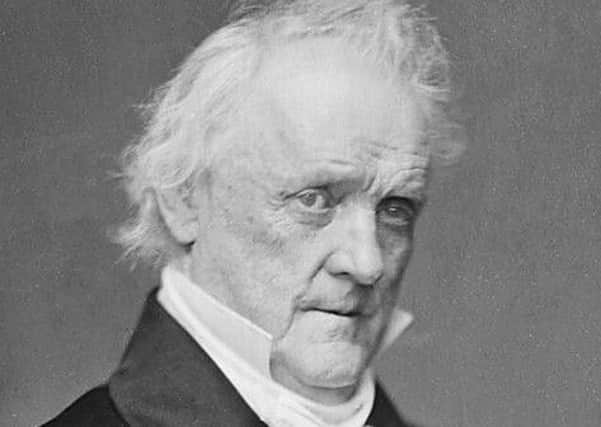From the Laggan to secession, the 15th US President James Buchanan


He remains the only president to be elected from Pennsylvania and he remained a lifelong bachelor.’
James Buchanan has a very interesting family story, extending back eight centuries, that connects to Derry and the North West of Ireland.
Advertisement
Hide AdAdvertisement
Hide AdIrene Martin researched and published this story, ‘In Search of Buchanan’, in 2011.
In the early 11th century, a branch of the O’Cahans of Roe Valley, County Derry, settled in Scotland and acquired the lands of Buchanan on the east side of Loch Lomond, in Stirlingshire.
Their descendants, as Lairds of Blairlusk, Stirlingshire, adopted, in the 14th century, the surname Buchanan.
George Buchanan sold his estate at Blairlusk to his brother William Buchanan and settled in the townland of Deroran, County Tyrone, four miles east of Omagh, in 1674, during the Plantation of Ulster.
Advertisement
Hide AdAdvertisement
Hide AdGeorge’s son, Thomas Buchanan, migrated, c. 1700, to Ramelton, County Donegal.
Thomas Buchanan’s great-grandson, James Buchanan, born 1761, son of John Buchanan and Jane Russell, was raised on the Russell farm at ‘Stony Batter’ near Ramelton, County Donegal.
When James Buchanan was 22 his uncle Joshua Russell, owner of Russell’s Tavern at Gettysburg, Pennsylvania, sent for him.
James departed Derry for Philadelphia on the ship Providence on 4 June 1783.
Advertisement
Hide AdAdvertisement
Hide AdJohn Nixon, a London merchant and accomplished watercolour artist, painted the city and its quays in the 1780s, just before the construction of its first wooden bridge in 1790.
It is this scene that James Buchanan would have experienced prior to boarding the Providence in 1783.
A ferry boat, carrying two horses and five passengers, can be seen making its way across the River Foyle, and the elegant spire of St. Columb’s Cathedral dominates the skyline.
The larger ship in the foreground could well be destined for America.
Advertisement
Hide AdAdvertisement
Hide AdJoshua Russell met his nephew James Buchanan at Penn’s Landing in Philadelphia and they travelled together, by horse, the 321 miles to Gettysburg.
Today, in Philadelphia, at Penn’s Landing, there is a sculpture, depicting the Irish arriving in Pennsylvania, by Glenna Goodacre, commemorating the contribution of immigrants to the US.
In the 18th century some 250,000 Ulster-Scots, better known in the United States as Scotch-Irish or Scots-Irish left Ulster, through the ports of Belfast, Londonderry, Newry, Larne and Portrush, for North America.
Philadelphia was the gateway to America for the majority of Ulster emigrants in this period; of 128 vessels advertised to sail from Derry between 1750 and 1775, 99 of them sailed for Philadelphia.
Advertisement
Hide AdAdvertisement
Hide AdStrong links between the cities of Londonderry and Philadelphia were established, with trading links, in the 18th century.
Flaxseed, the raw material of the linen industry, was shipped to Derry from Philadelphia in the early spring, and on the return voyage linen and emigrants were destined for Philadelphia.
James Buchanan left Russell’s Tavern, moved west to Cove Gap, Pennsylvania in the Allegheny Mountains and bought, in 1787, a trading post which he renamed ‘Stony Batter,’ after the ancestral home in Ireland.
On 16 April 1788 James Buchanan married Elizabeth Spear, and, on 23 April 1791, their son James, who was to become the 15th President of the United States, was born in a log cabin at Stony Batter, Cove Gap, Pennsylvania.
Advertisement
Hide AdAdvertisement
Hide AdPresident James Buchanan didn’t forget his Irish roots; in 1833, on his way back from Russia when he was US Ambassador at St. Petersburg, he visited Ramelton and his cousin John Buchanan.
The 15th President of the United States ensured that several more North American place names have a strong connection with the North West of Ireland.
Buchanan County, Iowa, Buchanan County, Missouri, and Buchanan County, Virginia are all named after the second generation Donegal man, who visited the port of Derry and the ancestral sod as a young man, long before the tumultuous years of the secessions and civil war.